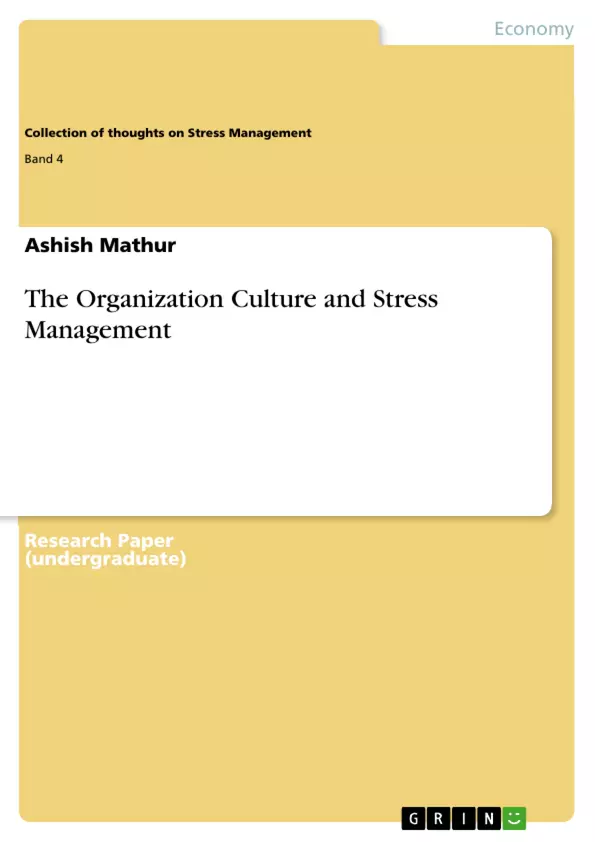The employee is an individual governed by the ethics, values and perceptions and the various other forces in the environment which impact his choice of job. The individual person is facing the social pressures from the society in form of the exposure and performance. The motivations related to the behavior of the employees shape the success of the organization. The needs of the employees are both the intrinsic and the extrinsic and decide the preferences and the goals and the aspirations of the employees. These job expectations can only be fulfilled if the organization has the right strategic policies to deal. The work culture of the organization decides the experience of the employees for the achievement of goals and objectives.
Inhaltsverzeichnis (Table of Contents)
- Introduction
- Relationship between Needs, Motivations, Preferences of Individual Shaping the Stress Free Environment
- Business Organization System
- Factors Impacting the Organization System and the Environment
Zielsetzung und Themenschwerpunkte (Objectives and Key Themes)
This text examines the relationship between organizational culture, stress management, and employee well-being. It aims to understand how organizational culture influences the work environment and its impact on employee stress levels. The text also explores the factors that contribute to a healthy and productive work environment.
- The influence of organizational culture on employee satisfaction and stress levels
- The relationship between employee needs, motivations, and preferences in creating a stress-free environment
- The role of effective stress management in fostering a productive and healthy workplace
- The impact of external factors, such as economic activity, political stability, and cultural influences, on organizational systems and employee well-being
Zusammenfassung der Kapitel (Chapter Summaries)
- Introduction: This chapter introduces the concept of organizational culture and its influence on employee behavior and well-being. It emphasizes the importance of understanding employee needs, motivations, and preferences in shaping a positive work environment. The chapter also discusses the role of stress management in creating a healthy workplace.
- Relationship between Needs, Motivations, Preferences of Individual Shaping the Stress Free Environment: This chapter delves into the factors that contribute to a stress-free work environment, focusing on the interplay between employee needs, motivations, and preferences. It explores how social pressures, information access, and personal desires impact employee behavior and job satisfaction.
- Business Organization System: This chapter examines the business organization system and its impact on employee satisfaction. It highlights the role of organizational culture and values in creating a positive work environment and promoting employee well-being. The chapter also discusses the benefits of a healthy organization, including increased productivity, improved communication, and enhanced interpersonal relations.
- Factors Impacting the Organization System and the Environment: This chapter explores the external factors that influence organizational systems and employee well-being. It examines the impact of economic activity, political stability, cultural factors, and government policies on the work environment and employee productivity.
Schlüsselwörter (Keywords)
The text focuses on the themes of organizational culture, stress management, employee satisfaction, and work environment. Key concepts include employee needs, motivations, preferences, and the impact of external factors on organizational systems. The text also touches upon the benefits of a healthy and productive workplace, including increased productivity, improved communication, and enhanced interpersonal relations.
- Quote paper
- Dr. Ashish Mathur (Author), 2011, The Organization Culture and Stress Management, Munich, GRIN Verlag, https://www.grin.com/document/184304



